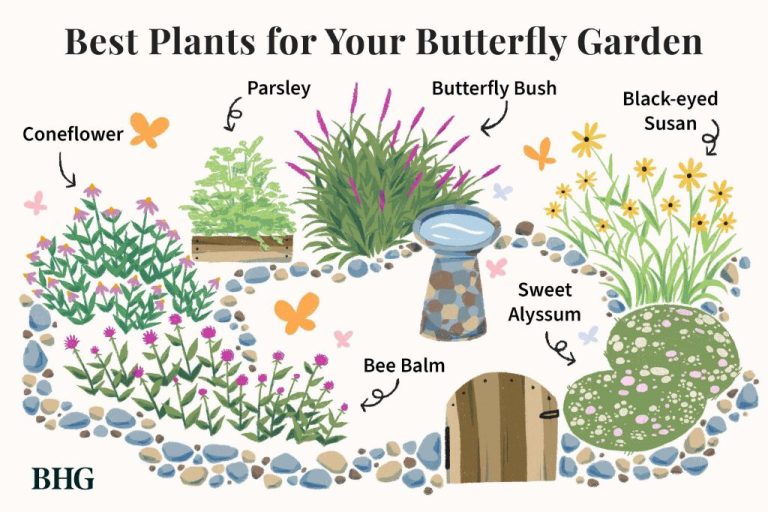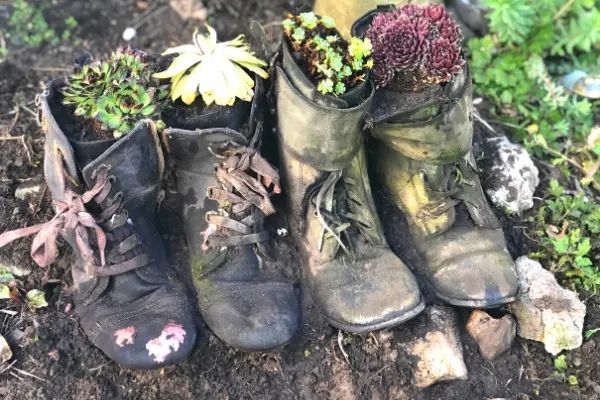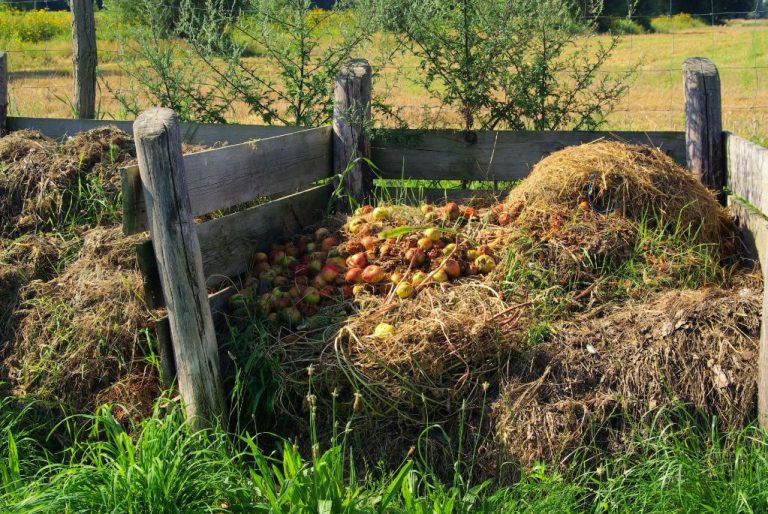Beginner’S Guide To Raised Bed Gardening: Building And Planting
Raised bed gardening refers to growing plants in soil that is contained within a frame or box constructed above ground level. The soil is raised above the surrounding ground, which provides benefits for plant growth and makes gardening tasks easier. Raised beds are ideal for small spaces since they allow for more plants to be grown intensively with less area.
Some key advantages of raised bed gardening include:
- Better drainage and drier soil which reduces problems like root rot
- Easier to manage the soil and add amendments like compost
- Soil warms up earlier in the spring allowing for an earlier start
- Reduced weed problems since contained soil doesn’t have weed seeds
- Easier on your back since no bending down to ground level
- Can intensively plant more in a small space
Raised beds are great for growing vegetables, herbs, flowers, and other plants in a small yard or patio. The confined space allows you to provide optimized soil conditions while also making the garden look tidy and organized.
Planning Your Raised Beds
When planning your raised bed garden, the first step is to determine the location. Choose a spot that receives at least 6 hours of direct sunlight daily. Make sure the area has good drainage – standing water can rot the wooden boards. Pick a location close to your water source and easily accessible from your home. Consider proximity to utilities like electrical lines or gas pipes[1].
Next, decide on the size and shape of your raised beds. Typical widths range from 3-4 feet wide to allow easy access from both sides. Length depends on space available, but 6-10 feet is common. Rectangle shapes maximize planting space, while square foot gardens with grids allow intensive planting[2].
Finally, determine the number of beds your space can accommodate. Allow 3-4 feet between beds for access. Start small with 1-2 beds for ease of care. Add more later as your experience grows.
Sources:
[1] https://ecogardener.com/blogs/news/factors-to-consider-in-raised-bed-sizes
[2] https://www.gardenary.com/blog/what-sizes-are-common-for-raised-garden-beds
Building Materials
When choosing materials for raised garden beds, the most common options are wood, metal, and stone. Each material has its own advantages and disadvantages:
Wood – Cedar and redwood are popular choices as they resist rot and insect damage. Pressure-treated lumber can also be used, but avoid railroad ties and painted wood which may leach chemicals. Wood is an attractive, lightweight, and affordable option. However, it will deteriorate over time and may need to be replaced within 5-10 years.
Metal – Galvanized steel, aluminum, and copper beds are durable, rodent-proof, and will last for decades. However, metal can transfer heat, which may overheat plants in hot climates. Metal is also one of the most expensive options. https://www.ruralsprout.com/raised-garden-bed-materials/
Stone – Natural stone like granite, sandstone, and flagstone are incredibly durable but very heavy. Mortared stone beds are permanent, while dry-stacked stones are movable. Stone maintains even soil temperature. However, stone beds are labor-intensive to install and the most expensive option.
In summary, wood is a good choice for most home gardens given its balance of affordability, appearance, and lifespan. For certain climates or permanent installations, metal or stone may be preferable. Always avoid any wood treated with creosote or paint to reduce exposure to toxins.
Building Your Raised Beds

Building a raised bed is a relatively straightforward DIY project that can be completed in a weekend. You’ll need some basic tools and materials, and a free weekend. Here are the main steps involved:
Tools needed:
- Saw – to cut boards to length
- Drill – to drill holes and drive screws
- Tape measure
- Level
- Screwdriver or drill bit
- Hammer
- Safety equipment – gloves, eye protection, etc.
Step-by-step instructions:
- Measure and mark the boards where they will be cut. Cut boards to required length with saw.
- Lay out the boards on a flat surface and square up the corners. Predrill holes through boards.
- Attach corner boards with 3” exterior screws driven into the predrilled holes. Check corners are square with level.
- Add remaining side boards, drilling pilot holes and driving screws to attach securely.
- Flip frame over and attach second frame following same method.
- Place one frame inside the other to complete basic box frame. Tap corners with hammer to square up.
To secure the boards, predrill holes through the boards about every 12-16 inches, and drive 3” exterior-grade screws through both layers of boards. This locks everything together firmly. Be sure to check corners for squareness with a level periodically.
Soil for Raised Beds
The best raised bed soil recipe contains a mixture of compost, topsoil, and sometimes other amendments like manure. The ideal raised bed soil will drain well and provide nutrients for your plants. According to the Joe Gardener podcast, a good raised bed soil mix contains:
- 1 part compost – provides nutrients for plants
- 1 part topsoil – provides structure
- 1 part coir or peat moss – helps retain moisture
- 1 part perlite or vermiculite – improves drainage
You can also add small amounts of organic fertilizers like worm castings, kelp meal, or bat guano for extra nutrients. Some gardeners add composted manure to their raised bed soil for added organic matter.
In terms of depth, most vegetables thrive in at least 12 inches of raised bed soil. Shallow-rooted greens and herbs can grow well in 6-8 inches of soil, while root crops like carrots and potatoes need deeper soil of at least 18 inches.
Drainage and Irrigation
Proper drainage is critical for maintaining healthy soil and plants in raised beds. To promote drainage, start by laying down a 2-4 inch layer of gravel, pebbles, or other coarse material at the bottom before adding soil https://www.vegega.com/blogs/gardening-tips/enhancing-soil-drainage-with-raised-beds. The gravel base creates a reservoir for excess water to drain away from the roots. You can also mix sand or perlite into the soil to improve drainage.
For watering raised beds, soaker hoses or drip irrigation systems are ideal. These low-pressure, targeted watering methods deliver moisture directly to plant roots without excessive evaporation. Position soaker hoses or driplines along the length of the bed or snake them back and forth. Use a timer to automate watering for convenience. Soaker hoses and drip irrigation conserve water and help prevent fungal diseases in beds by keeping foliage dry https://www.thebuddingplanter.com/11-ways-to-improve-raised-bed-drainage/.
Deciding What to Plant
When deciding what to plant in your raised beds, first consider which vegetables, flowers or herbs you’d like to grow. Vegetables like lettuce, kale, radishes, carrots, tomatoes and peppers are all great choices for raised bed gardens according to The Best Vegetables to Grow in a Raised Bed from Seed at meadowlarkjournal.com. Herbs like basil, thyme, rosemary, parsley and chives also thrive in raised bed conditions. For flowers, options like marigolds, zinnias, sunflowers and nasturtiums add cheer.
Next, determine if your raised beds will be located in full sun (at least 6 hours of direct sunlight daily) or partial shade (3-6 hours of sun). Full sun vegetables include tomatoes, peppers, cucumbers, squash, melons and eggplant. Cool weather crops like kale, lettuce, carrots and radishes can tolerate partial shade. Most flowering annuals require at least 6 hours of sun per day.
Finally, plan out crop rotation for optimal soil nutrition each year. Avoid planting the same families of vegetables in the same spot for consecutive growing seasons. Rotation groups include: tomatoes/potatoes/peppers, lettuce/cabbage/kale, and beans/peas/carrots. According to the Savvy Gardening article The Best Vegetables to Grow in Raised Beds at savvygardening.com, it’s best practice to wait 3 years before repeating a plant family in the same raised bed space.
Planting Your Raised Beds
When it comes to planting your raised beds, you have two main options – direct sowing seeds or using transplants. Direct sowing involves planting seeds directly into the soil in your raised bed. This works well for crops like root vegetables, leafy greens, beans, peas, corn, and squash. According to Mastering Raised Bed Gardening, direct sowing can help maximize your yield in a small space. Transplants involve growing seedlings indoors or purchasing them from a nursery, then transplanting them into your raised beds when they reach the right size. Crops like tomatoes, peppers, broccoli, and cabbage are commonly grown as transplants. Transplants allow you to get a head start on the growing season.
Proper spacing is crucial when planting your raised beds. You want to space plants appropriately so they have enough room to grow and maximize yield without overcrowding. According to Raised Bed Garden Tips, it’s important to follow planting guidelines for the mature spread of each crop. Using grids can help with proper spacing – mark grids on paper first to map out your planting plan, then use stakes and strings to mark grids directly on your raised beds. This will make it easy to visualize the spacing and identify optimal placement for each crop.
Caring for Your Raised Beds
Caring for your raised beds will ensure your plants stay happy and healthy. Proper watering, fertilizing, mulching and maintenance like weeding and pruning are key.
Watering
Raised beds tend to dry out faster than gardens planted in the ground. Check the soil moisture regularly by sticking your finger into the soil. Water thoroughly whenever the top few inches of soil become dry. Use soaker hoses or drip irrigation systems to avoid wetting the leaves and focus water right to the roots. In hot weather, you may need to water daily.
Fertilizing
Most potting mixes contain enough fertilizer to feed plants for the first 6-8 weeks after planting. After that, you’ll need to begin fertilizing. Organic fertilizers like compost, fish emulsion, worm castings or manure can be worked into the soil or used to make a fertilizer tea. Chemical fertilizers should be diluted and applied according to package directions to avoid burning the plants.
Mulching
Adding 2-3 inches of an organic mulch like wood chips, leaves or straw helps conserve soil moisture and prevents weeds. Mulch also helps regulate soil temperature. Replenish the mulch as needed each season.
Weeding
Stay on top of weeding to prevent weeds from crowding out your vegetables or ornamentals. Shallow cultivation and hand pulling are best to avoid damaging plant roots in a raised bed’s confined space.
Pruning
Prune back overgrown plants or remove spent flowers and vegetables regularly to encourage new growth. Cutting plants like tomatoes suckers helps concentrate the plant’s energy into the main stems and fruit.
Staking
Staking and trellising taller plants like tomatoes, peas and pole beans supports them upright and prevents sprawling. This keeps plants tidy, helps improve air circulation and prevents fruit and vegetables from resting on the soil where they can rot.
Troubleshooting Common Issues
Even the best-maintained raised bed gardens can run into problems. Being aware of potential issues and how to address them will help you take quick action to keep your garden thriving.
Common pest and disease problems include aphids, slugs, fungal diseases, and blight. Make sure to regularly inspect plants and identify pests early before they can multiply. Remove diseased material promptly and use organic treatments as needed. Rotate plant families each year to prevent disease buildup in soil. Providing good drainage and air circulation will also help.1
Nutritional deficiencies show up as yellowing leaves, stunted growth, and poor fruit set. Test soil annually and amend with compost and organic fertilizers based on plant needs. Side dressing with compost or fertilizer mid-season can prevent deficiencies.
Over time, the boards of raised beds can slump, warp, or rot. Use durable, long-lasting wood or reinforced materials when building beds. Check for signs of deterioration annually and replace compromised boards. Providing good drainage under and around beds will help them last longer.
Make sure beds have adequate drainage holes and use gravel or wood chips in the bottom layer. Slope beds slightly for drainage. Line beds with landscape fabric to prevent soil from washing out. Improve heavy clay soils with compost over time. Mulch also helps retain soil moisture and prevent erosion.






